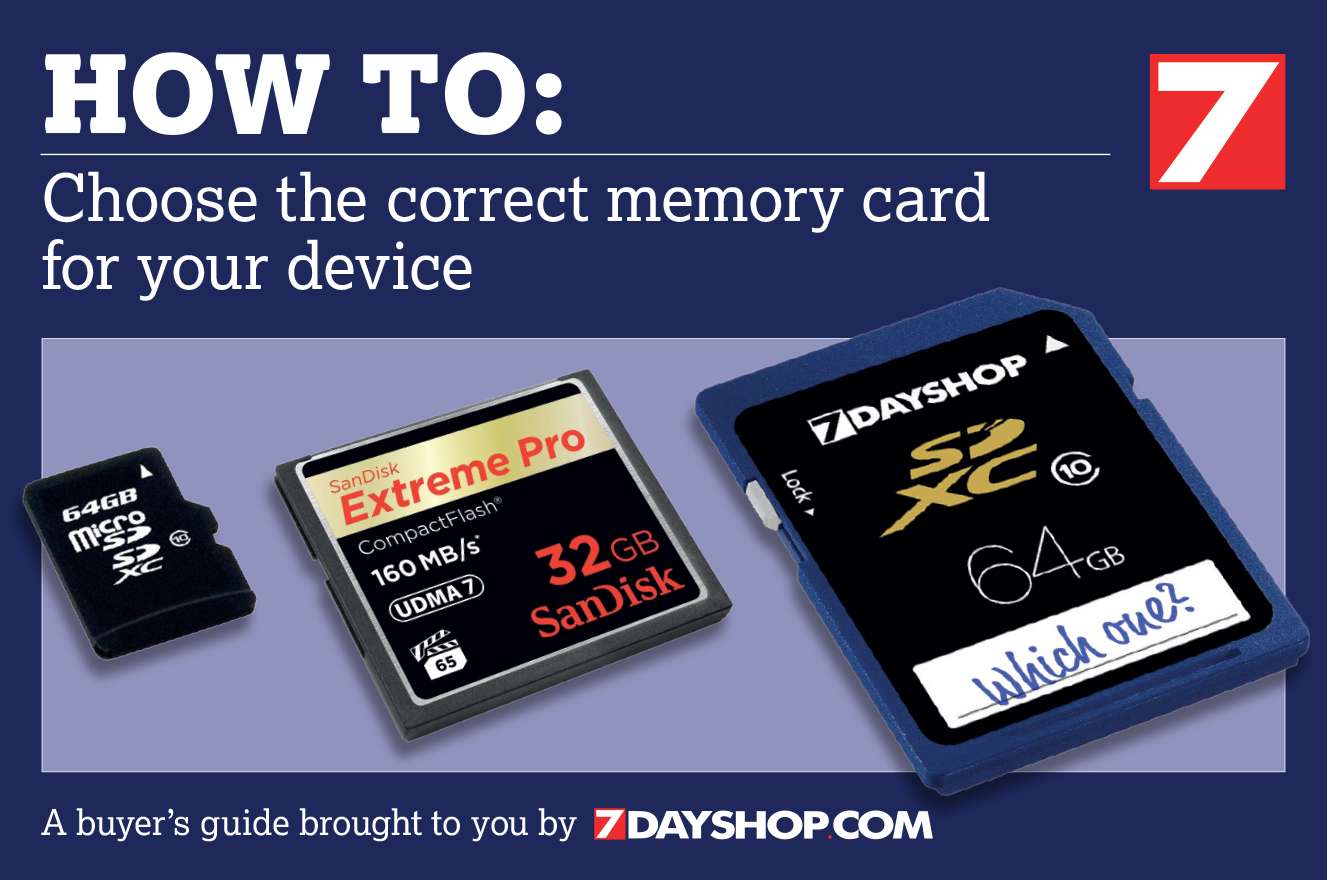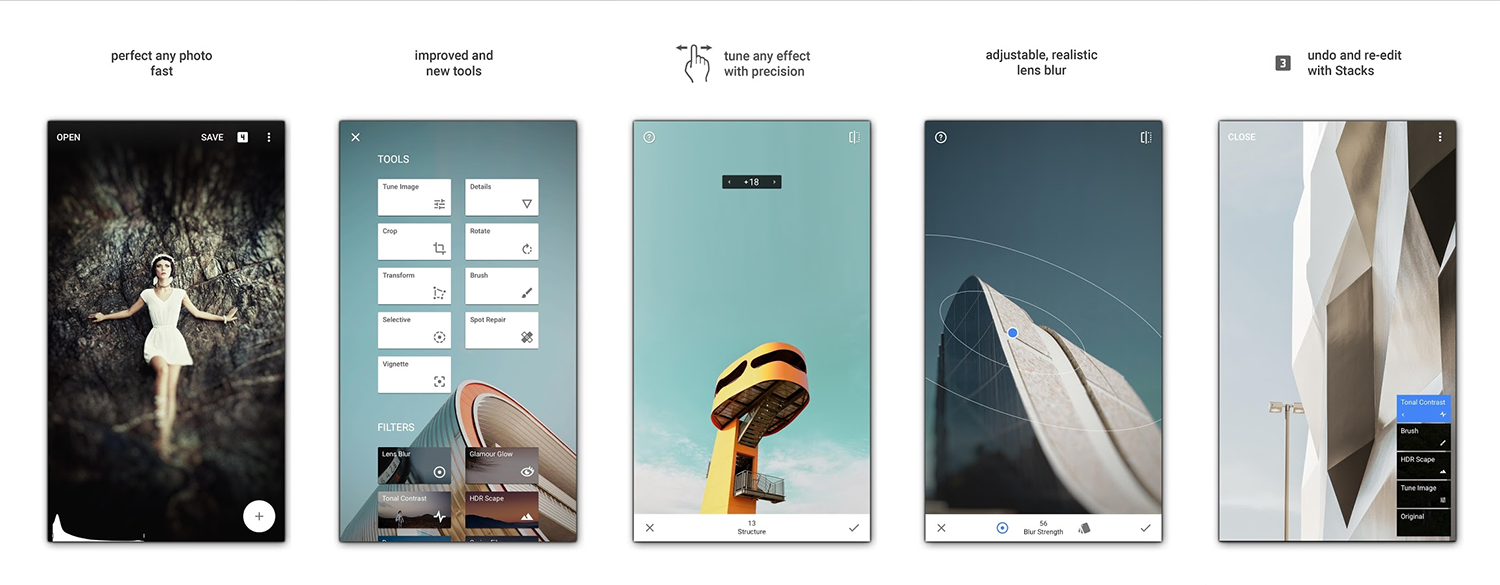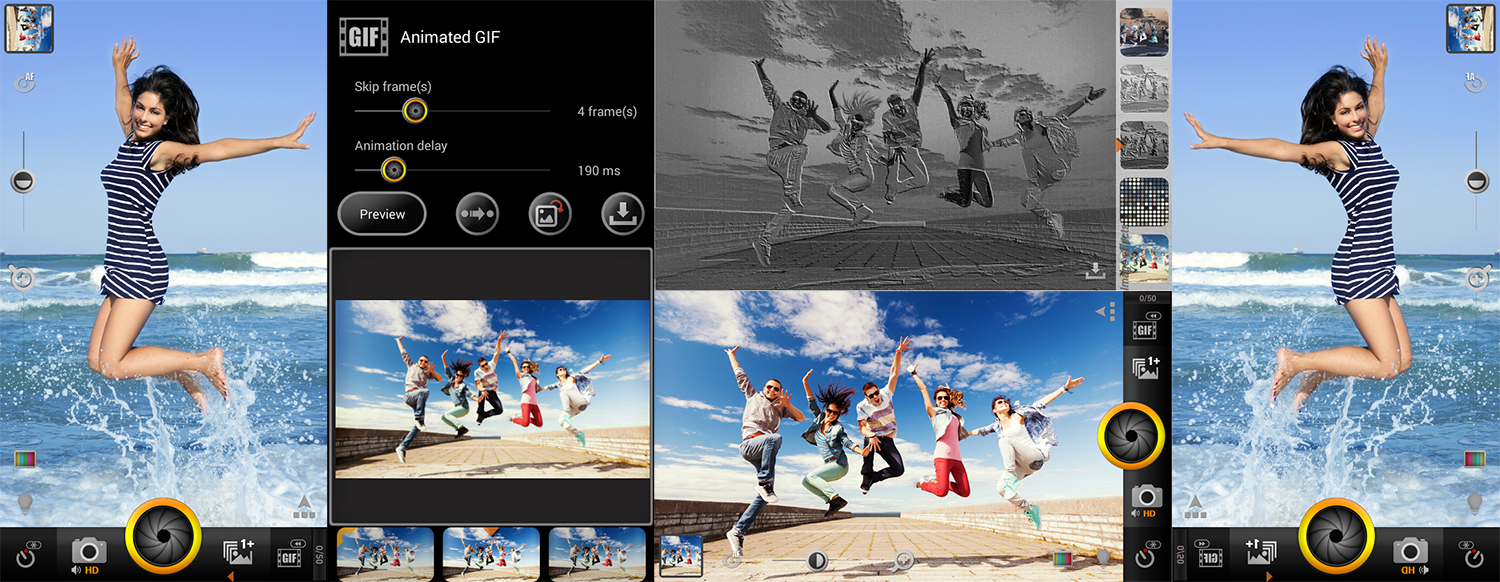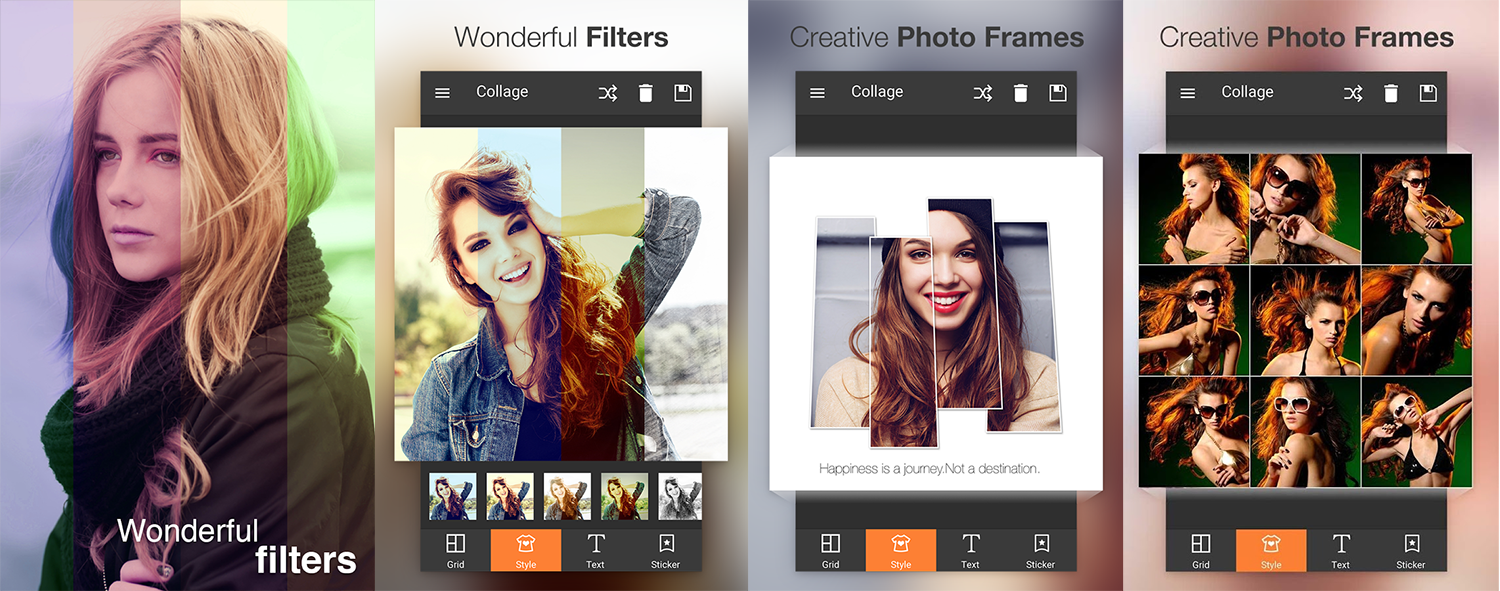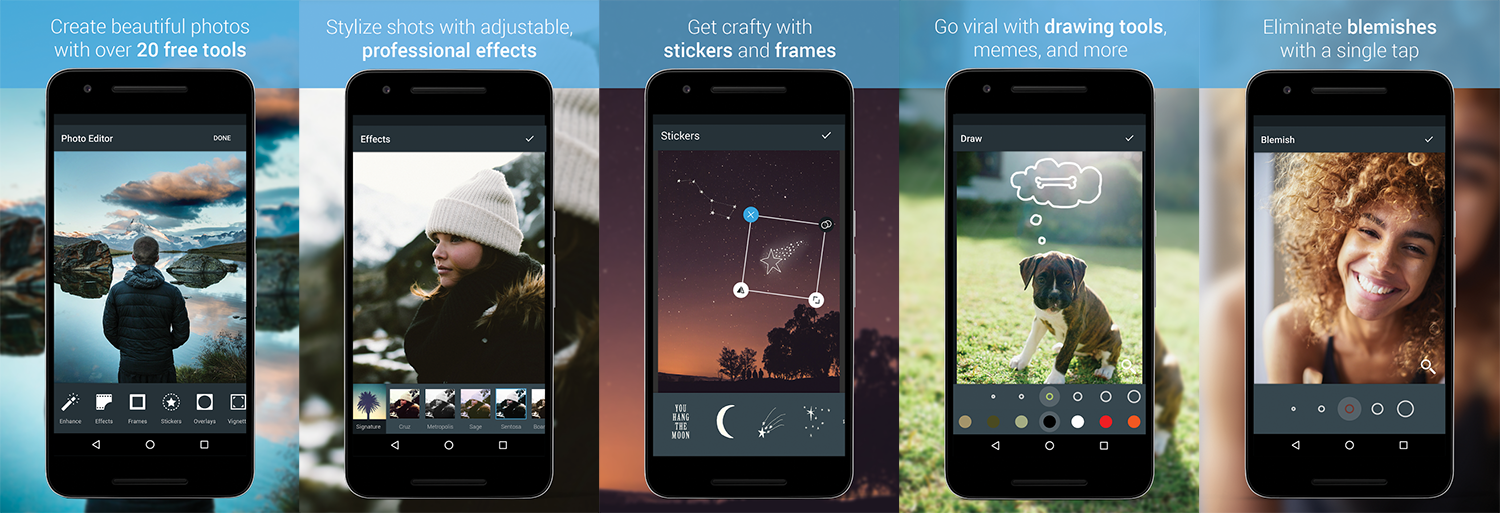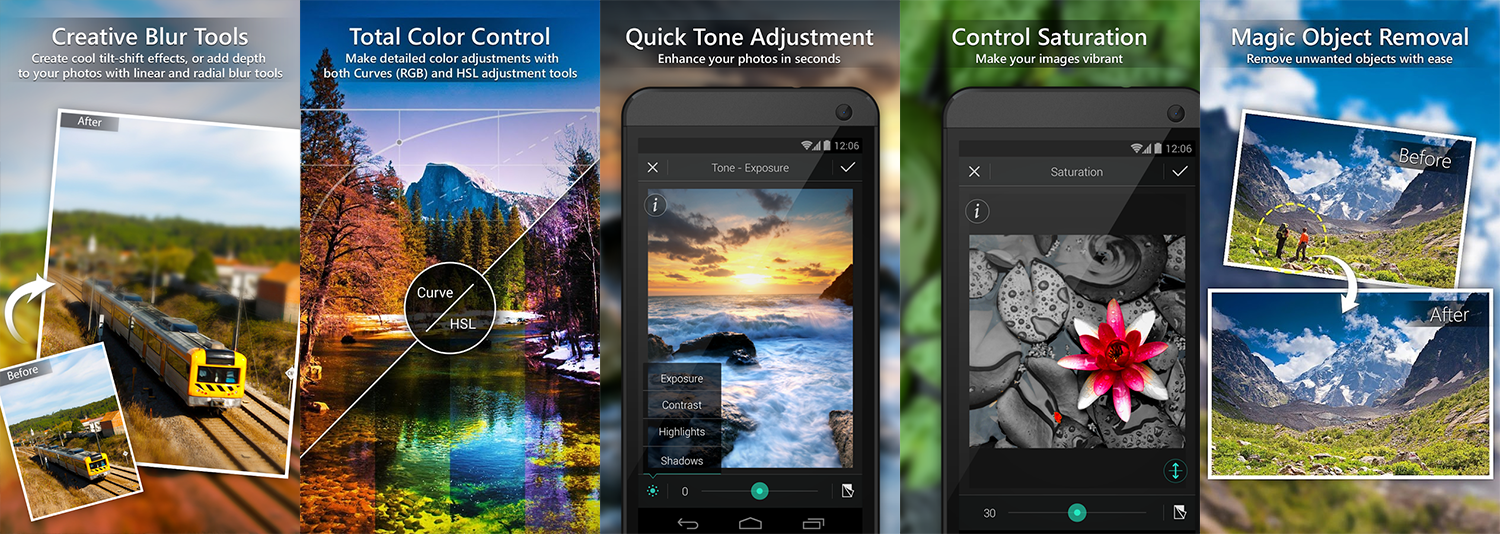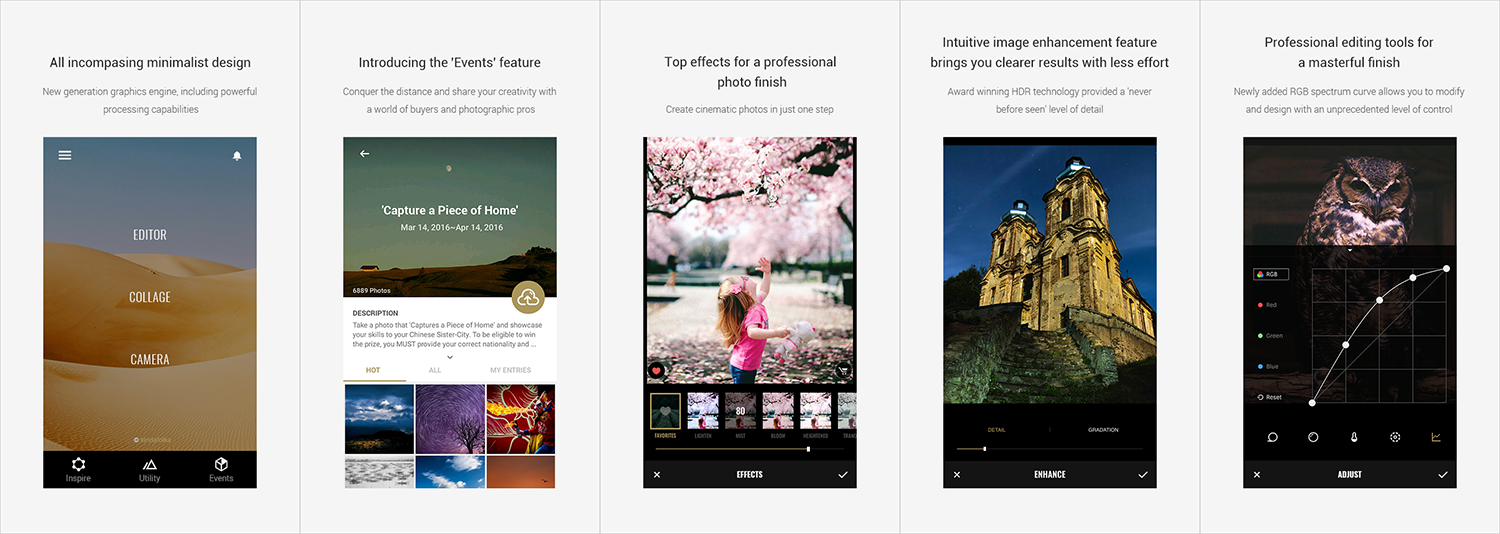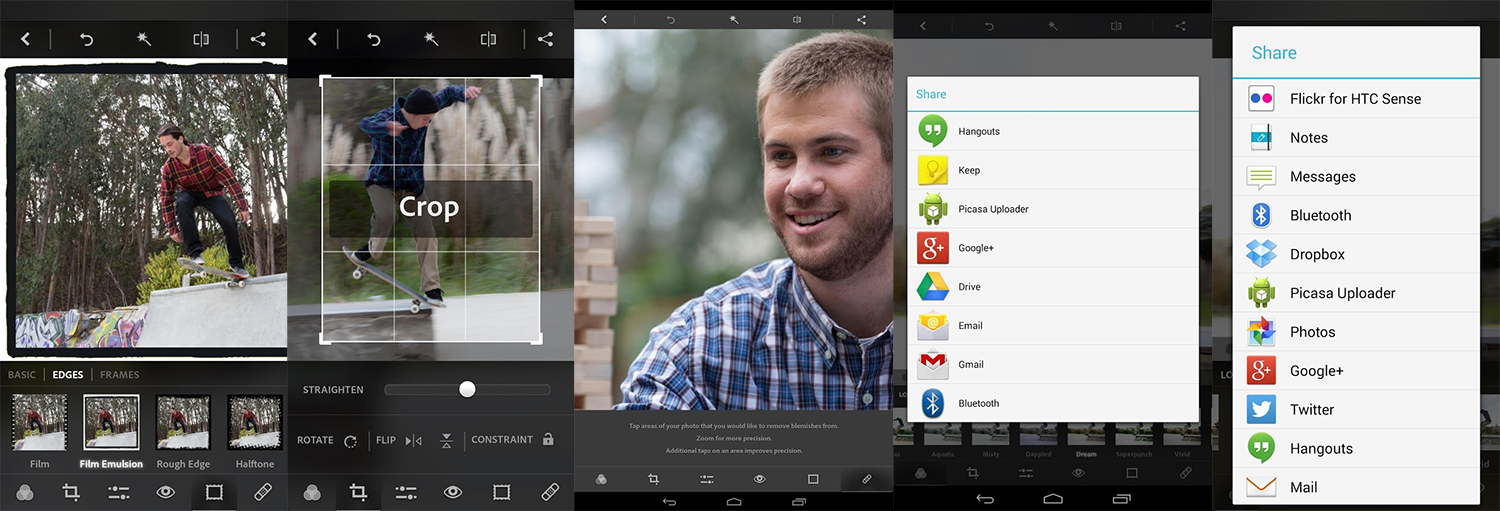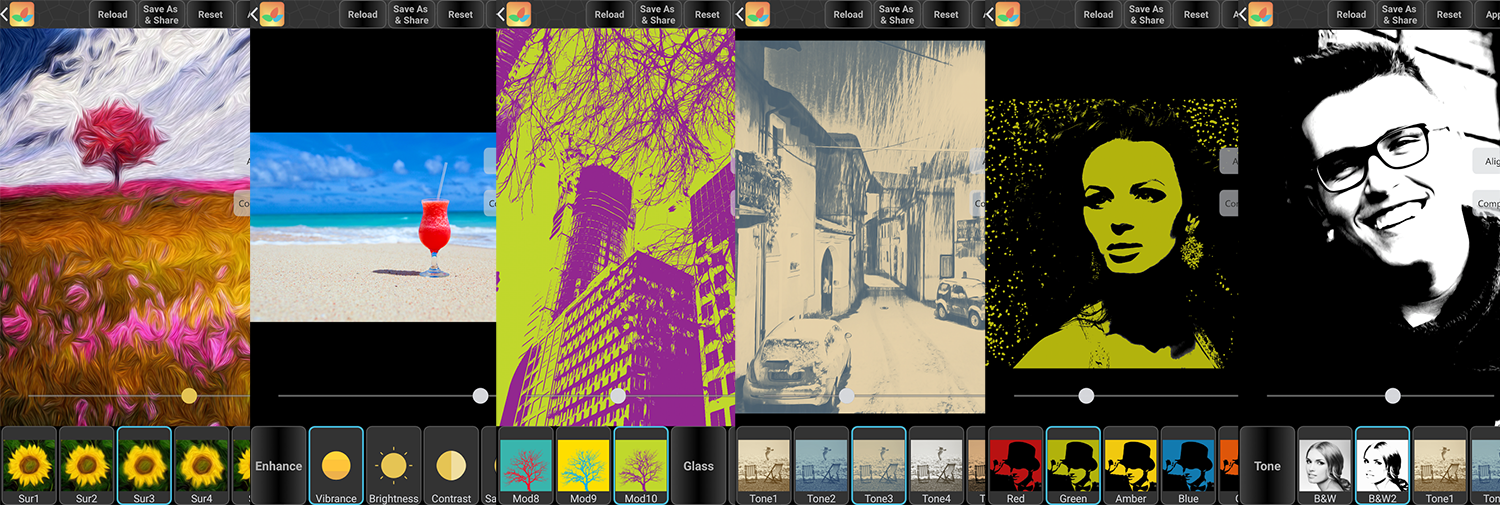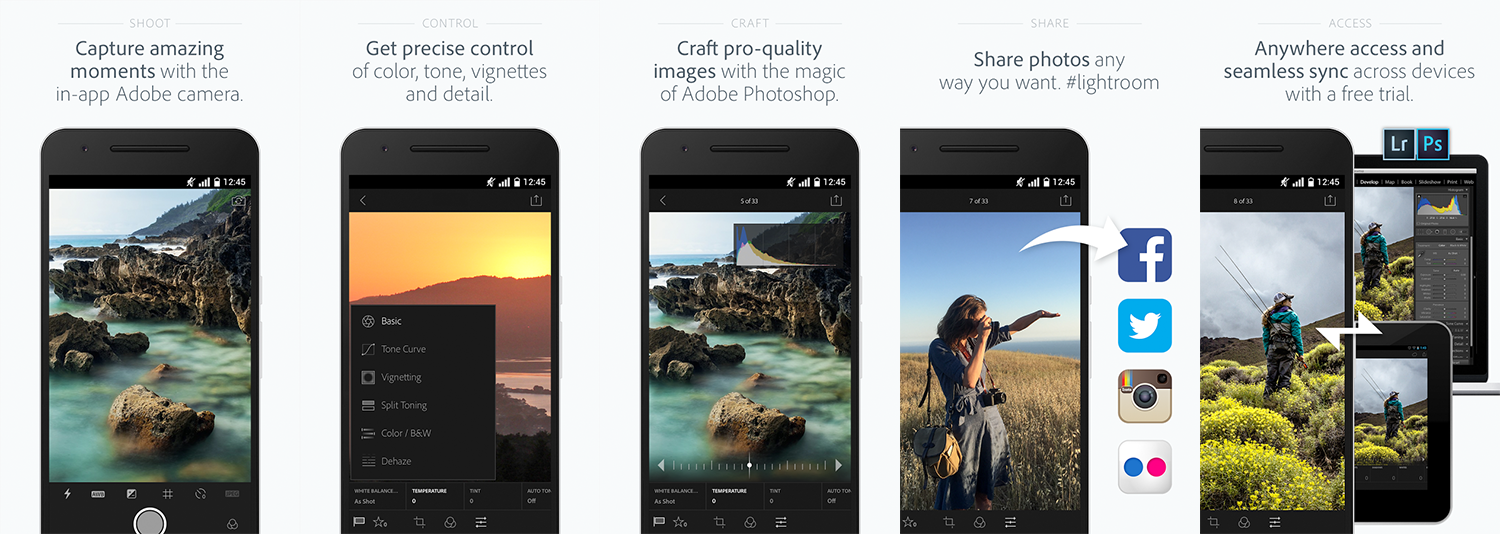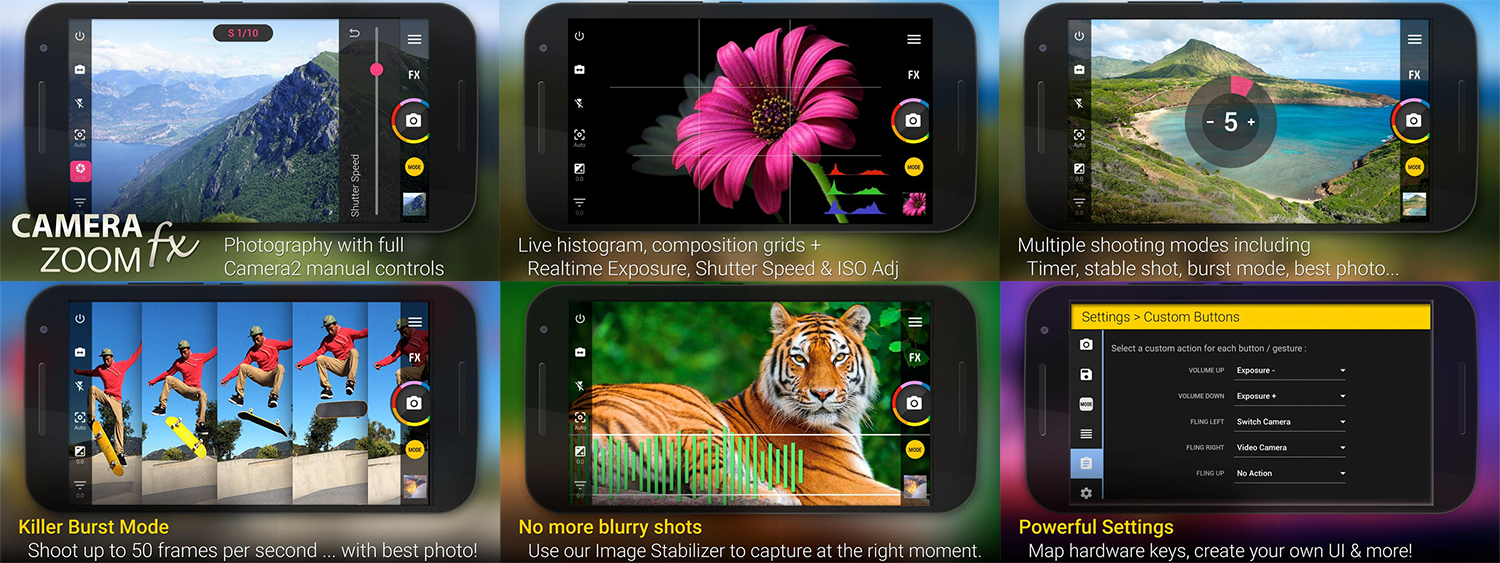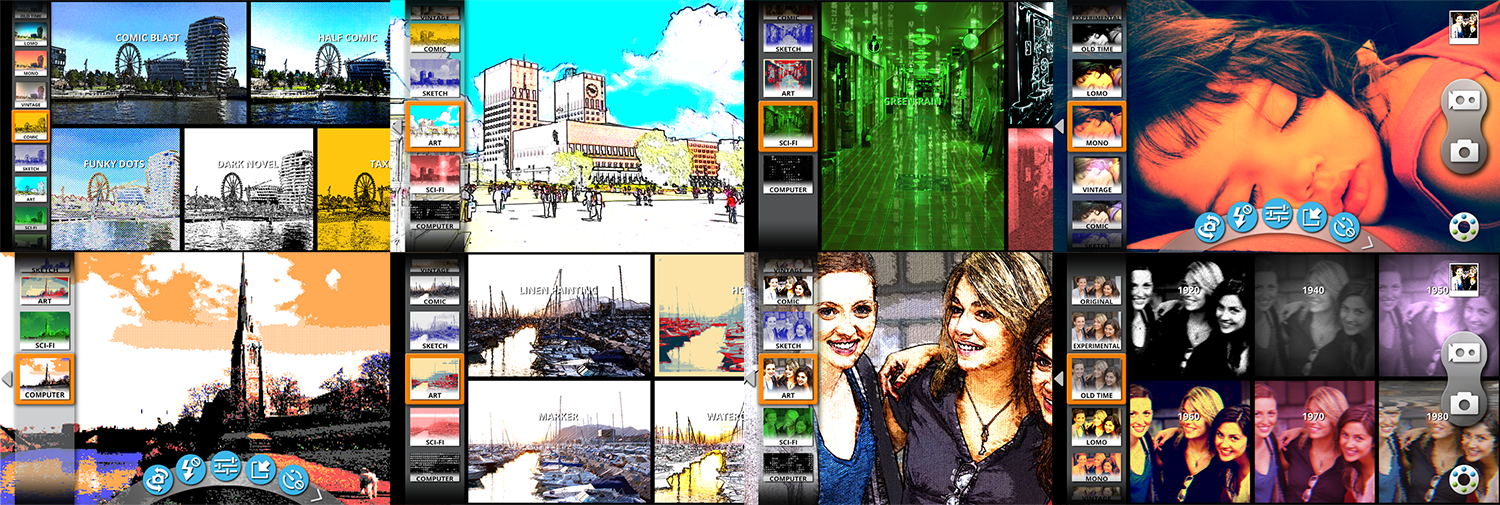How to choose the right card
SD memory cards are now pretty much standard for a range of devices such as mobile phones, tablets, digital cameras and camcorders. Getting the right card is essential. They can increase the storage capacity and performance of your device.
Memory card formats: SD, microSD and CompactFlash
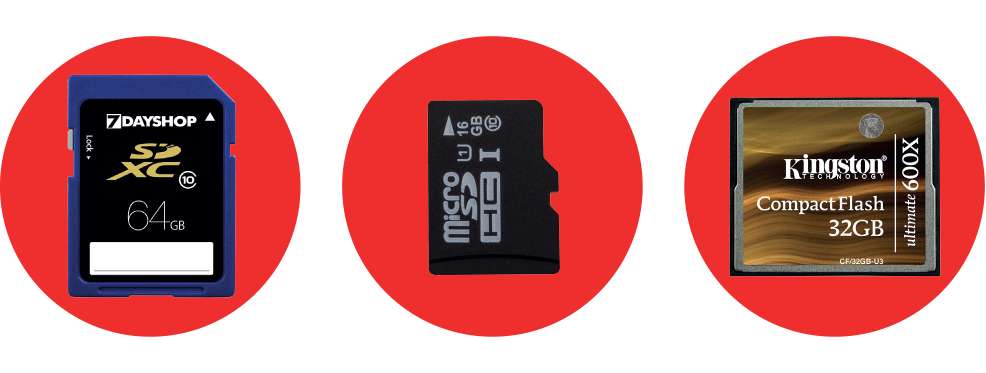 SD, microSD and CompactFlash are the main card sizes on the market today. Within each card size, there are different classes of storage capacity and speed.
SD, microSD and CompactFlash are the main card sizes on the market today. Within each card size, there are different classes of storage capacity and speed.
SD memory cards are typically used in personal computers, video cameras, digital cameras and other large consumer electronics devices. They tend to feature in older or budget equipment as there has been a move to smaller cards. Dimensions: 32 x 24 x 2.1mm. Approximate 2g weight
MicroSD cards are the size of a finger nail and most often used in mobile phones, tablets and other smaller electronic devices. With an adapter, it’s possible to use a microSD card in a traditional SD card slot. Dimensions: 11 x 15 x 1mm. Approximate 0.27g weight.
CompactFlash cards are mainly used for professional and high resolution DSLR cameras and video recording thanks to their durable design and high storage capacity. Dimensions: 43 x 36 x 3.3mm (Type I). 43 x 36 x 5mm (Type II). Approximate 3.3g weight.
Some memory cards are also now Wi-Fi enabled. Other types of memory storage include USB memory flash drives and USB sticks, often used to plug into computers and laptops.
A miniSD card was also designed, while Sony developed its own range of SD cards – although the main types of memory cards available now are SD, microSD and CompactFlash.
The key is ensuring the memory card fits your device and is compatible. You also need to consider the storage capacity and performance of the card as well.
Memory card capacity (storage)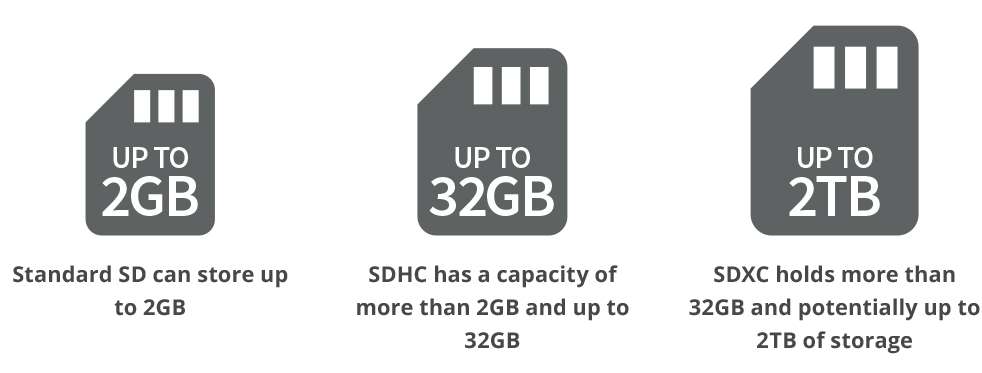
You will want to know how much data you can store on a card – whether that’s pictures, video, music, apps or files.
For SD and microSD memory cards, there are three capacity classes: SD, SDHC and SDXC. CompactFlash is not categorised in the same way. The amount of data is referred to as GB – gigabyte – or TB – terabyte.
With SD cards, you will see these categories usually written on the card and packaging as SD, SDHC and SDXC. With microSD cards, it is normally written as microSD, microSDHC and microsSDXC.
Depending on their capacity, memory cards use different file systems. Standard SD cards use FAT 12 and 16 file systems, SDHC uses FAT32 and SDXC uses exFAT.
The highest storage SD card to date is a 512GB card unveiled by manufacturer SanDisk in September 2017.
CompactFlash cards do not have the same classification, but manufacturers offer cards with up to 256GB capacity for example.
How many photos, videos and music can a memory card hold?
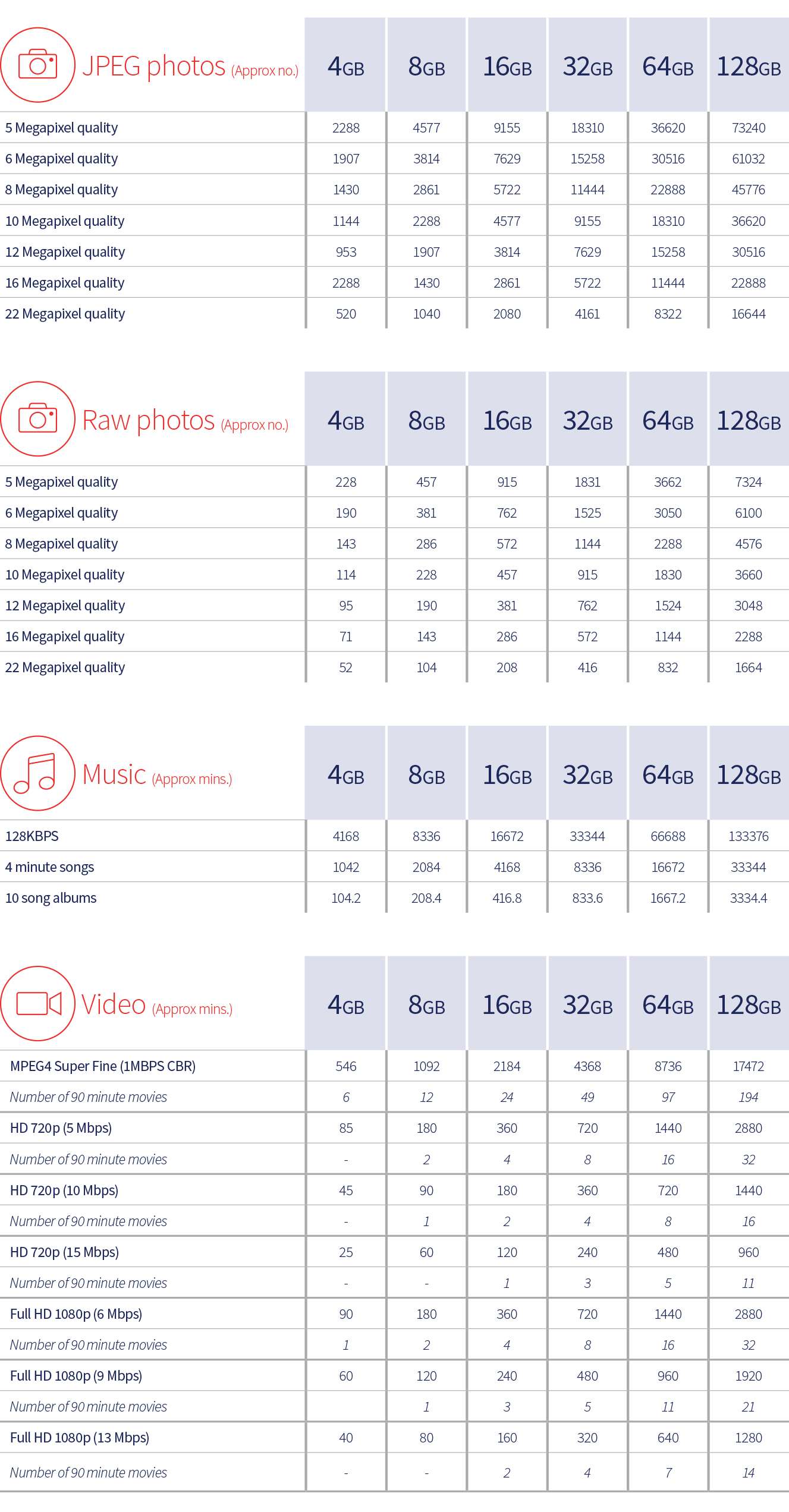
Compatibility
You also need to check your device is compatible with the capacity type of your card as well as its size – look out for a logo on your device or check the usual manual. Here are some guidelines to follow:
SDXC cards may only be used with SDXC devices
SDXC devices can use SD, SDHC and SDXC memory cards
SDHC memory cards can be used with SDHC and SDXC devices
SDHC devices can use SD and SDHC memory cards
SD devices can only use SD cards
(Some capacity on memory cards is used for formatting and other functions, so is not available for storage.)
Memory card performance: transfer rates and speed class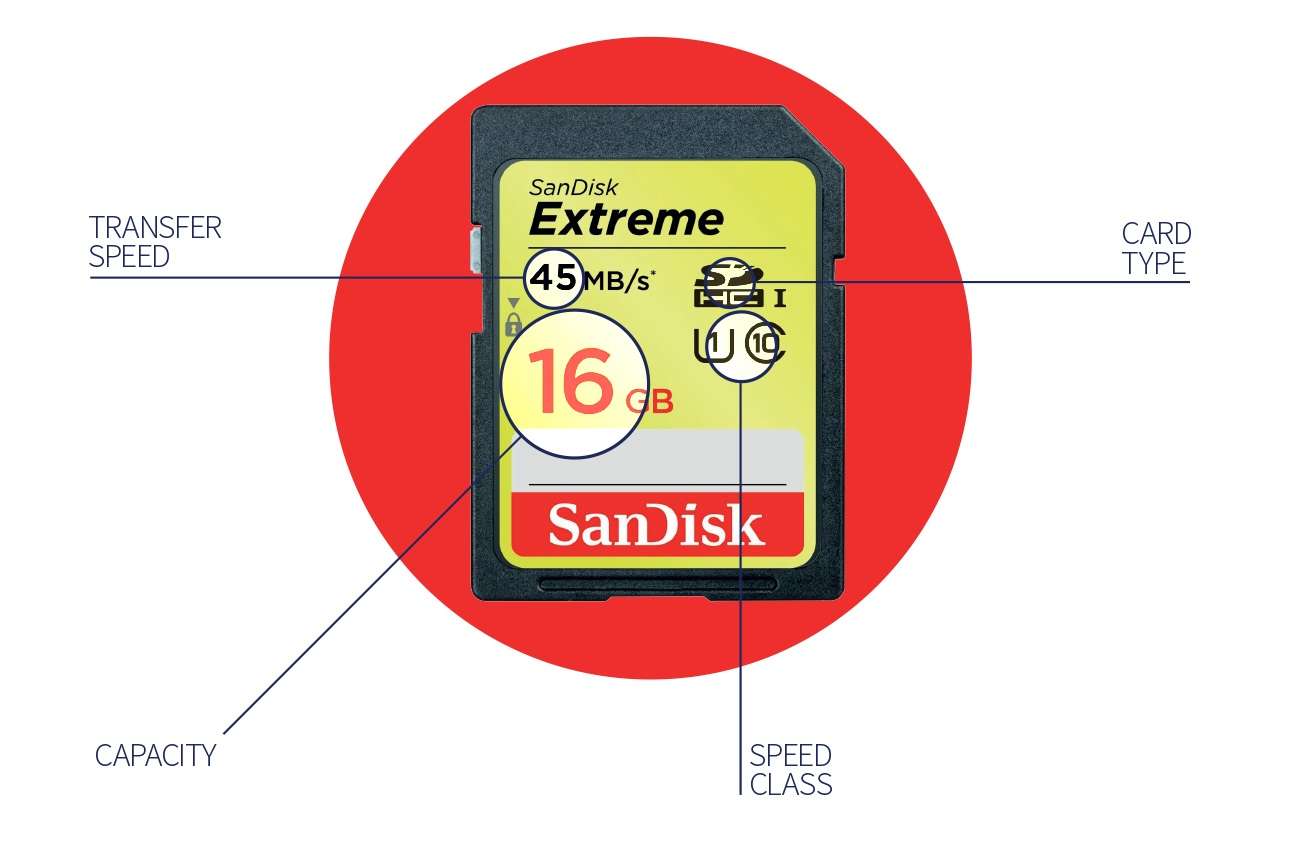
Memory cards usually have read and write speeds displayed on the card and/or on the packaging. The read speed is how quickly photos and other data is transferred from your card for example to your laptop.
The write speed refers to how fast data is written/stored to the card. Photographers using burst mode will want a high write speed for example when speed matters in terms of capturing images.
Memory cards are given a speed class based on minimum writing performance to record video. A class 2 card will offer a minimum of 2 megabytes a second (MB/s) performance – with SD video recording available.
Higher class cards can be used for HD – Full HD video recording. A class 4 card will offer at least 4MB/s, a class 6 will have a minimum 6MB/s performance.
A class 10 card has a minimum of 10MB/s write speed and can offer Full HD video recording plus HD still consecutive recording.
This is a minimum and many cards offer higher performance, so check the specifications. On a memory card, you will normally see this speed class displayed as a number in a semi-circle (see image below).
You may also see a second speed indicator displayed as a number in what looks like a U above a Roman numeral/s.
This second indicator is designed for UHS – ultra high speed – devices. This is the fastest performance category and is available on SDXC and SDHC memory cards and devices. Again, you will need to check compatibility – for example by checking any displayed logos and the user manual.
Applications for a UHS 1 speed class card include full higher potential of recording real-time broadcasts and capturing large-size HD videos. A UHS 3 card is capable of recording 4K 2K video.
Some SD cards may have a write-protect sliding tab, which allows you to decide whether anything can be written to the card or not.
Memory card accessories
A memory card reader, which can “read” several different types of SD cards, could be useful addition to your kit bag. A read is especially if your computer or laptop doesn’t have an inbuilt SD card slot or the wrong type of slot. They usually connect via a USB port.
You can also buy microSD cards with adaptors to use as SD cards (although it is wise to check the compatibility of your device). If you have a lot of memory cards, a memory card case could be another good idea to keep them safely stored.
Where to buy SD cards
7dayshop.com sells a wide range of memory cards and other types of memory storage devices. Just click on the links below to see the great prices on offer.
- SD memory cards
- MicroSD memory cards
- CompactFlash memory cards
- Memory card readers
- Memory card cases
- USB flash drives
- USB memory sticks
- External hard drives
- Go shopping at 7dayshop.com for electronics, photography equipment and more
Sources for guide: www.sdcard.org, http://en.wikipedia.org
More technology stories for you
Apple takes a bigger bite out of smartphone market
The future of storage: the “DVD with 40,000 HD movies”
The holodeck in your living room: Microsoft RoomAlive
Evolution of a Terabyte of Data: 1956-2015 [INFOGRAPHIC]



